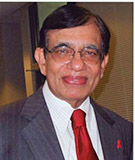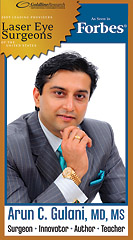
The Science of Organ Transplantation – Part V

What’s paired kidney donation?
It is a well-established fact that living donor kidney transplants are associated with superior post-transplant long term survival compared with cadaveric donor transplants. Despite better outcomes, numbers of living donor transplants done in the United States haven’t gone up and today, in spite of all our efforts in educating the public about the safety of kidney donation, majority of the kidney transplants come from people who have died. “In the 21,000 kidney transplants that took place last year, only a third were from live donors,” according a recent report. This is primarily because of the paucity of living related or unrelated donors like altruistic friends who are properly matched.
What if there is an alternative? It appears there is a new way to get a kidney faster, if you don’t have a matching living donor. This is called “Kidney Paired Donation or exchange.” KPD essentially is a process in which living incompatible donor-recipient pairs are matched with other living incompatible donor-recipient pairs to find successful matches. For example, a patient with blood group A has a living willing but unmatched donor whose blood group is B, then that donor can be successfully matched with another similar incompatible donor-recipient. In other words, the kidneys would be exchanged between the two pairs so that the A recipient then would receive an A kidney and the B recipient, a B kidney. Isn’t that wonderful?
Many transplant centers also evaluate potential individuals who wish to donate a kidney to someone they don’t know. These are “altruistic kidney donors,” also called non-directed kidney donor. There are many inspiring stories of altruistic kidney donors if you search Google. In my last column, I wrote about Father Davis Chiramel who donated one of his kidneys to a poor patient. Soon, a business magnate and a billionaire in Kerala, India – Kochouseph Chittilappilly – followed suit by donating one of his kidneys to an ailing trucker, a total stranger, thrusting him into spotlight.
Today, Chittilappilly is well-recognized as the biggest advocate of organ donation in his home state of Kerala. He has established a charitable foundation bearing his name that underwrites the cost of dialysis treatment for more than 3,000 poor patients every year amid other things. Organ donation and transplantation are hot button issues in India and every year there are at least 200,000 patients waiting for a transplant and only 7,500 selfless donors are available. Father Chiramel and Chittilappilly are trying to change all that and the response from the general public has been good. In November 2018, Forbes magazine featured Chittilappilly as one of the “Asia’s Heroes of the year.” A great achievement, indeed.
Recently, Wall Street Journal (March 11, 2019) ran an informative personal story on this very subject by Yogita Patel, titled “I gave my kidney to a stranger to save my brother’s life” and Yogita herself became part of a KDP program. The idea behind this innovative kidney exchange program came from the Nobel Prize winning work of economists Drs. Alvin Roth and Lloyd Shapely whose pioneering work in applying game theory to market design was found to be applicable to kidney transplant program as well. This created more opportunities for transplants through exchanges. A kidney from a living donor works much better and more quickly but it’s often difficult to get a living related or unrelated donor since the recipients need a close biological match. “We have real shortages of transplants. Some of it is flexible. It seems like a place where economists can help,” said Dr. Roth, referring to the application of his work in matching markets that formed the basis for kidney exchanges.
“The kidney transplant market still needs a lot of improvement,” says Dr. Roth, “since there aren’t enough kidneys to clear the waiting list.” Ignorance fueled by misinformation may be a major deterrent in donors coming forward to help the needy patients. “What will happen to me if I lose one kidney? Would I be disabled for the rest of my life?” asked one person, when we started a discussion on the subject. “Nothing will happen to you, it’s quite safe to donate one,” I replied. The shortage of kidneys is quite significant that everyday thirteen patients die waiting for transplants. We can really improve this situation if more people participate in the kidney exchange program.
On the positive side, since its inception in 1986, many barriers to KPD have been overcome, including the development of national registries, shipping kidneys via commercial flights, and incorporation of non-directed donors (NDDs) into chains. Every year, April is celebrated as the National Donate Life Month and we request everybody to consider registering as organ, eye and tissue donor. Your role in this life saving and healing journey will be priceless and you will become an inspiration to others.
To be continued …
M.P. Ravindra Nathan, M.D., is a cardiologist and Emeritus Editor of AAPI Journal. For further reading: “Second Chance – A Sister’s Act of Love” by Dr. Nathan from Outskirts Press can be found at www.amazon.com
EYE CARE
Women are Special and so are their Eyes!

According to Prevent Blindness, the nation’s oldest eye health and safety non-profit organization, women have higher rates of eye diseases such as:
1. Cataract;
2. Glaucoma;
3. Age-related Macular degeneration.
Dry eyes, now a worldwide malady, especially accelerated with digital screens from our daily exposure also have a higher prevalence in women.
We have discussed management for dry eyes in our previous KhaasBaat column wherein technologies today not only enable us to diagnose specific kinds of dry eyes but also treat the specific condition effectively with long-term relief.
Additionally, women may also experience changes in vision related to pregnancy and menopause.
LASIK AND WOMEN
I personally do not recommend the regular Lasik for women over 25 years of age due to its incidence of dry eyes, attributed to the cutting of the Lasik flap.
New generation, Laser Corneoplastique techniques avoid blades and cutting and hence preserve the tear film-neural pathway.
On the flip side, dry eyes can be treated and women can surely avail of new generation lens implant technologies for cataract surgery, leading to a glass-free lifestyle.
According to the National Eye Institute, women have greater instances of eye disorders because they tend to live longer, are more likely to undergo certain cancer treatments that may affect vision, and experience normal age-related hormonal changes that may affect their eyes.
Additionally, the American Academy of Ophthalmology states that in general, women are more susceptible to autoimmune diseases than men, many of which affect vision, such as:
-
Lupus;
-
Sjögren’s syndrome;
-
Hyperthyroidism.
Prevent Blindness recommends steps that should be taken to protect vision and eye health, including:
• Getting regular eye exams;
• Quitting smoking;
• Consulting a doctor about taking nutritional supplements;
• Wearing UV-blocking sunglasses and a brimmed hat outdoors;
• Learn of any family history of eye disease;
• Using eye cosmetics and contact lenses safely;
• Avoiding advertised eye-beauty products without researching.
Expectant mothers and those going through menopause should be aware of possible vision changes and ocular surface instability and seek their eye doctors’ help in that delicate phase of life.
If cost is an issue, Prevent Blindness offers a free listing of financial assistance services in English and Spanish at: https://www.preventblindness.org/vision-care-financial-assistance-information.
Women are special and so are their eyes. Do look out for them and enhance vigilance in their care.
Try never to make them cry ’cause “I hate tears”!
Arun C. Gulani, M.D., M.S., is director and chief surgeon of Gulani Vision Institute in Jacksonville. He can be reached at [email protected] or visit www.gulanivision.com